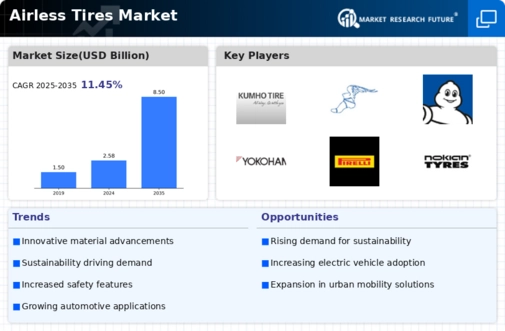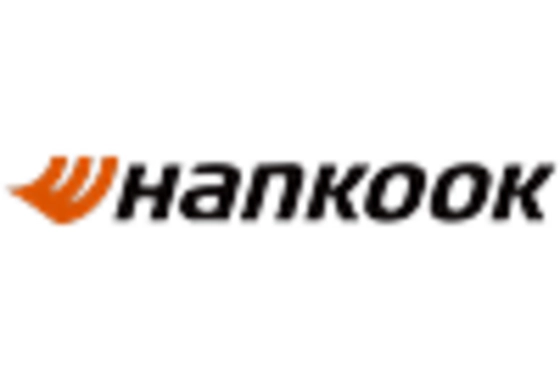Market Analysis
In-depth Analysis of Airless Tires Market Industry Landscape
In the fiercely competitive landscape of fleet ownership, where every marginal gain in efficiency translates into increased profitability, the adoption of measures to enhance fuel efficiency has become paramount. Airless tires, with their potential to significantly reduce fuel expenses, are emerging as a critical tool for fleet owners to augment their profit margins. The Rubber Division ACS, a segment of the American Chemical Society, reveals that approximately one-third of the power required to move a heavy-duty truck is attributed to the rolling resistance of its tires. This places rolling resistance as the second most significant contributor to the total energy loss in heavy-duty trucks, trailing only behind engine loss.
Recognizing the profound impact airless tires can have on commercial vehicles, manufacturers have redirected their focus towards developing solutions tailored for this segment. Significant investments are being made in the formulation of tread compounds that not only reduce tire rolling resistance but also maintain the crucial aspects of treadwear and durability for heavy-duty truck tires. The Goodyear Tire & Rubber Company, a prominent player in the tire industry, is at the forefront of this initiative. It is actively engaged in the development of tires designed to deliver maximum fuel savings, characterized by low heat generation and low rolling resistance specifically for long-haul applications. In 2018, the company announced plans to launch its most fuel-efficient tire range, incorporating compounds that could potentially save a 100-vehicle fleet over USD 338,000 in fuel costs annually. This innovation aligns with the broader industry trend of assisting truck manufacturers in meeting stringent future emission targets. In sectors like mining, where heavy-duty trucks operate in challenging terrains and extreme off-road conditions, the demand for airless tires is on the rise. The unique characteristics of airless tires, such as increased traction and the ability to sustain higher payload capacities, present lucrative growth opportunities for the market in these specialized applications. As fleet owners in mining operations intensify their focus on product features and operational efficiency, the adoption of airless tires becomes a strategic imperative.
Furthermore, the escalating competition among fleet owners, coupled with a heightened emphasis on tire wear resistance, quality, and reliability, has prompted industry players to adopt measures that not only enhance tire longevity but also contribute to increased vehicle fuel efficiency. Some airless tires have proven instrumental in achieving this through reduced rolling resistance and fatigue, providing fleet owners with the dual benefits of extended tire lifespan and improved profit margins.
Highlighting the significance of reduced rolling resistance, the National Research Council notes that it accounts for over 32% of power consumption for each hour required to move a heavy-duty truck. This underscores the pivotal role that airless tires play in addressing a critical aspect of energy efficiency in heavy-duty truck operations. These factors collectively contribute to the positive growth trajectory of the airless tires market, positioning it as an integral component in the ongoing evolution of the transportation and logistics sector towards sustainability and efficiency. As the industry continues to navigate challenges and embrace innovations, airless tires are poised to play a transformative role in shaping the future of heavy-duty transportation.

















Leave a Comment